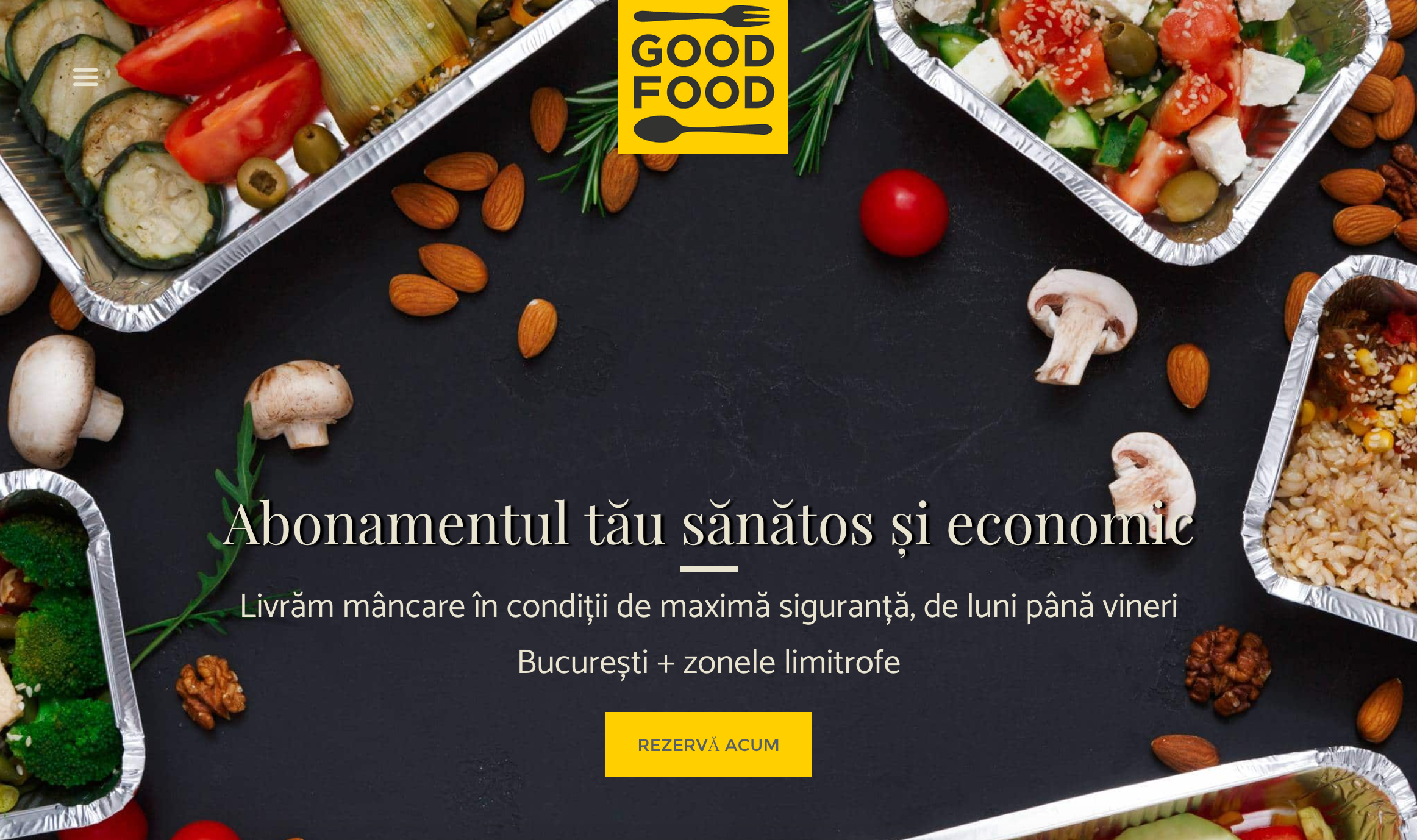The COVID-19 pandemic stopped time in place. We feel this both individually and collectively. And the economic outlook is not encouraging – industries such as tourism have completely disappeared, and the still-active workforce is fulfilling its tasks in front of monitors. This, while a significant part of the population lost their jobs.
Consumers’ interest and, implicitly, behavior has changed drastically, from the need for information to the need for consumption. Everything you knew yesterday about your audience is no longer valid today. How can you deliver what consumers want when their wish lists become more volatile? There are changes that call into question everything we knew so far about SEO; because the search volumes calculated in relation to the annual average partially lose their meaning in this unusual context.

Certainty in uncertain times through real-time data.
See the webinar organized in partnership with Wall Street and presented by Radu Mărcușu (CEO of Upswing) who explains how to overcome the crisis through business, SEO, content and marketing strategies and actions adapted to the current needs of consumers.
Humanity and the economy are sensitive and vulnerable.
More and more brands are facing, in the current circumstances, these barriers in communicating with their audiences. More and more businesses are suffering.
Regular marketing actions become irrelevant and, in some situations, can even lead to the loss of regular customers. Because none of us wants to see holiday offers in the feed. Or banners with the new collections of cocktail dresses. Or commercials that remind you how much you would like to open a cold beer with the boys. Initiatives that were not common until recently are becoming noise today.
We need empathy more than ever. And that’s what consumers expect from brands. It does not mean that marketing must become serious or, worse, gloomy. But whether it is meant to inform or entertain, it must be directed in such a way as to reach the audiences that are at home now. And finally to sell, but with delicacy and good intentions.
Ask yourself if your current strategy involves a response to your customers’ concerns. If you use the right channels to reach them. If you communicated your plans to them in a coherent way. If you have provided all the necessary resources to meet their needs. If you have adapted your messages to the current context.

#weareinthistogether
The unrest in recent weeks has clouded everyone’s projections in ways that only the 2008 financial crisis has done. Uncertainty, fear and reactions to them do not support businesses, regardless of profile or size.
We at Upswing did not enjoy immunity in this regard either. We had to make restrictive financial decisions, with the sole purpose of keeping our team together for as long as possible.
In search of solutions, however, we realized that we have a superpower: data. And that helped us adapt quickly and mathematically face the Coronavirus challenge. In short, we have adjusted the principles that guide us in what we do and rely on real-time data. So, here’s what’s happening now at Upswing:
Principles that guide us in this period.
We use real-time data
We have resources from previous years that show us the usual trends, but the speed of change forces us to use, in any decision, the latest data that we can extract.
We think (also) short-term
In an area with medium and long-term results, setting short-term goals is a major change. In the new context, we are also looking for short-term victories – the results for 15-30 days, without deviating from the cause.
Don't forget about the context
Because, as the context changes from a socio-economic point of view, so do consumer behaviors and needs. And our role is to answer them punctually and directly.
We also rely on push marketing
If, until recently, we based our strategies mostly on pull marketing (Google), now we rely on a combo with push marketing (Facebook). We generate content that consumers need NOW and promote it to generate results quickly. Organic results are less agile in this dynamic period.
Dedicated teams per project
Organizing teams in a silo-type system, commonly practiced by most agencies, has its shortcomings when the flow of information is so abundant. During this period each project has its own dedicated team, which includes a member of each department. This approach guarantees that the strategy is treated from all perspectives.
We reallocate resources in real time
We can’t afford to stick to plans during this time. Everything is changing fast, and our priority is to meet the current challenges, with a minimum of investment in additional resources. So we are proactive about changing actions, if necessary.
We track and use real-time data.
Upswing COVID-19 Trends
We wanted to understand how consumers react during this period. And we started by checking the status of all the keywords in the campaigns, in Google Trends and monitoring, daily and at weekly intervals, the dynamics of trends.
Thus, we came to build a perfect tool for measuring and tracking market trends, by daily monitoring 100k keywords from 25 industries.
Opportunities – New trends, you will see the words whose interest has increased in the last 3 days, compared to the week before the start of the pandemic (February 24 – March 1).
Opportunities – Lasting trends, you will see the words whose interest has increased in the last week, compared to the average of the last 12 months.
Most affected shows you those searches that followed a downward trend, for the same periods as above.
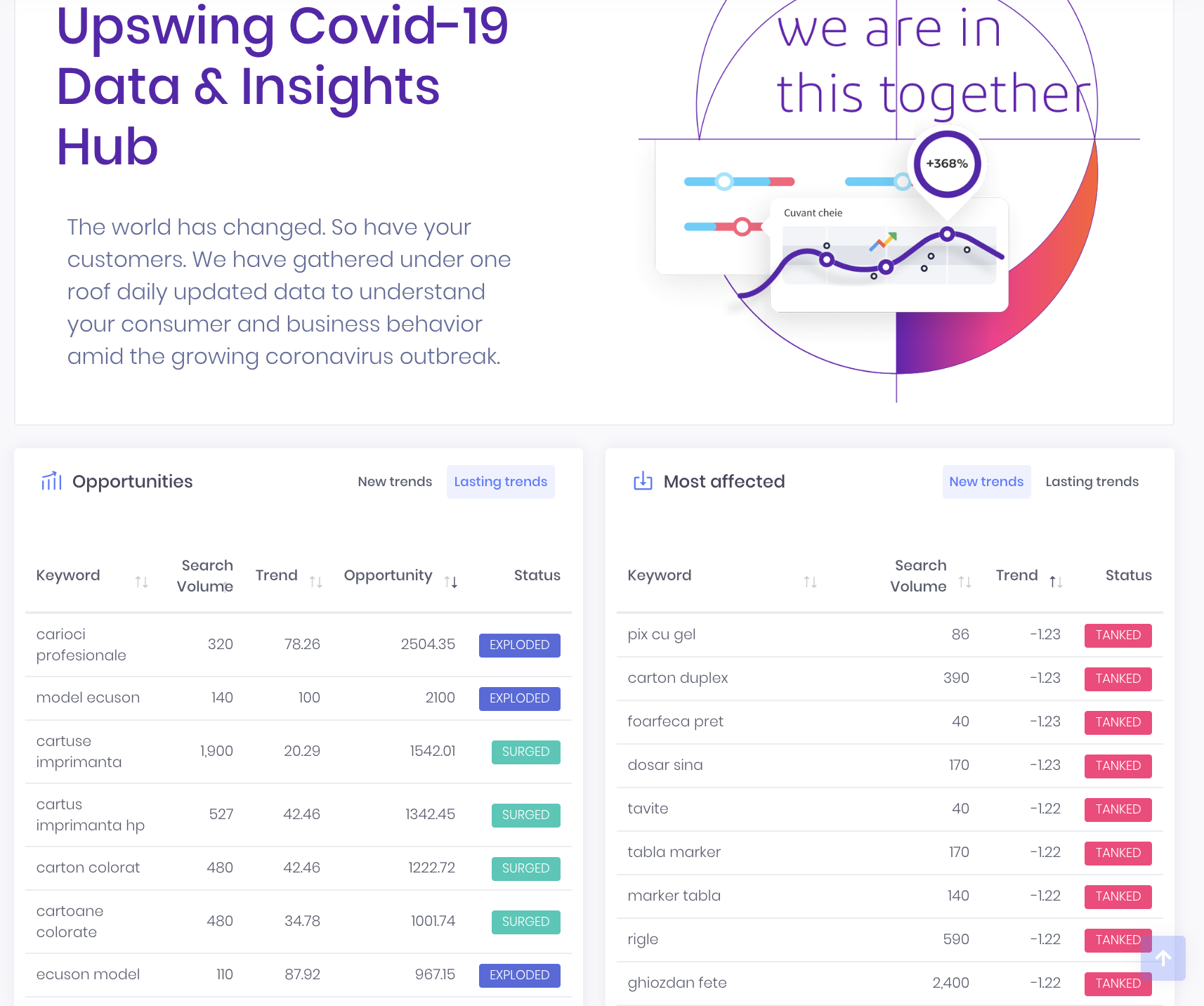
For example, from the analysis of data for a customer who sells stationery, we realize that consumer interest is growing for hobby products, but also for consumables for small printers, mainly used at home:
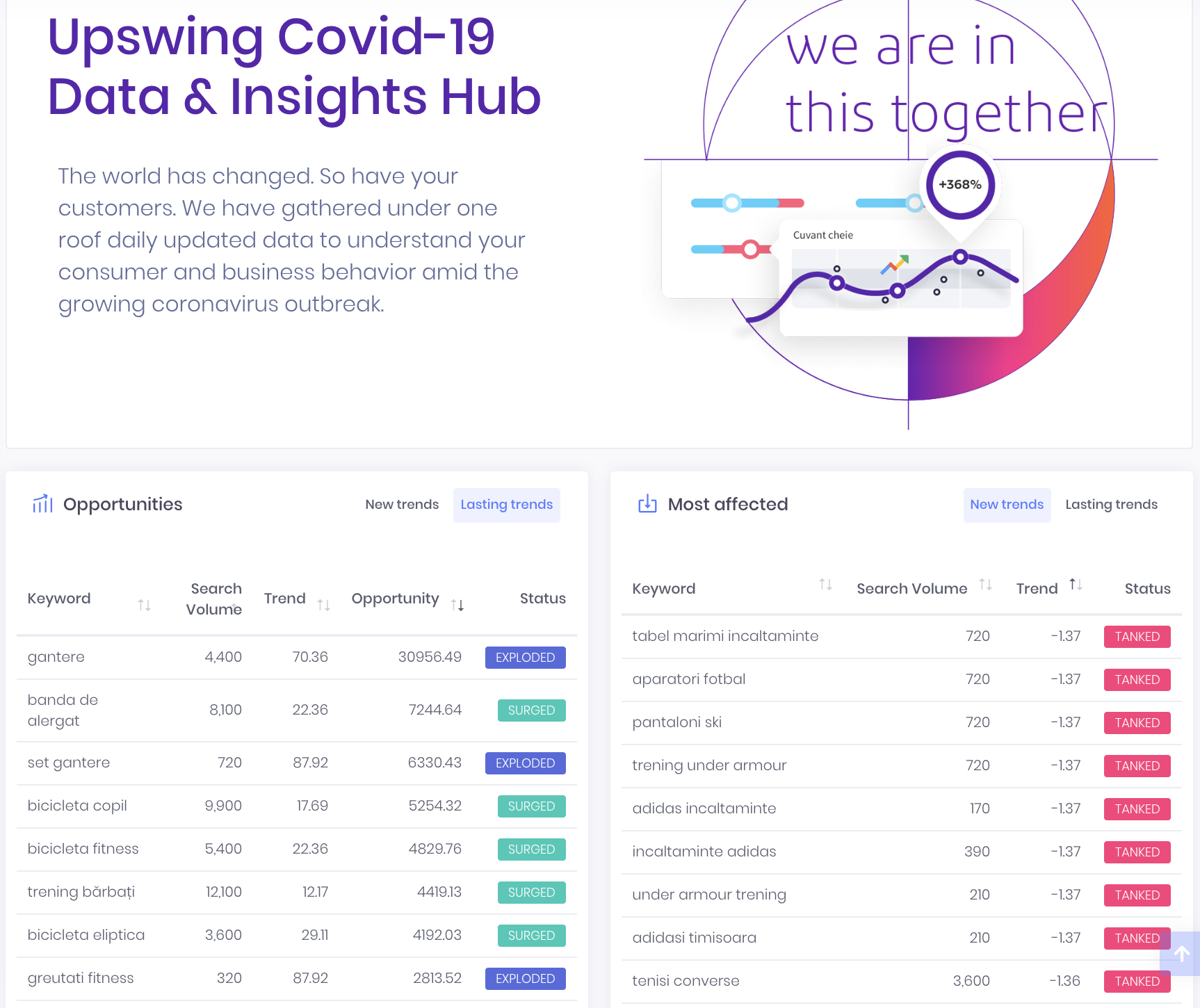
Another example from the Sports industry this time indicates declines in searches for sports and outdoor activities and increases in words related to exercise that can be done at home.
Google Analytics Revenue
We have developed dashboards in Google Data Studio, which show us how customer sales have been impacted. We compared it with the period before the crisis, but also with the same period last year, for a complete overview.
For example, we extracted data from the e-commerce section of our customers and constantly tracked them to see the current situation and the impact that COVID-19 has on customer sales. In this way, we know where and how to act.
Google Search Console
We use insights from the Google Search Console to see how impressions (Google searches) evolved before and after the crisis outbreak (March 8-10). Thus, we detect those categories from customer sites that we did not have in focus, but for which there is a growing interest now.
In analyzing these data, we also took into account the seasonality and the annual average, so as not to be misled by industries such as the flower industry, which usually grows a lot in early March.
Internal searches
We extracted the data from the internal search of customer sites and displayed them in a custom Dashboard, so that we could find unusual search patterns before and after the crisis outbreak (March 8-10).
This is a good indicator of the current needs of the market, because it helps us to identify those products that are mainly sought in this period, existing or not in the range of products of our customers and decide which subcategories should be generated and promoted.
How we use data to make the right business decisions quickly.
Adjusting financial forecasts
As financial forecasts become increasingly uncertain, search trend data can be used in the forecasting methodology. Although protecting the business from the darkest economic outlook is a prudent step, integrating emerging trends into the business plan can bring more clarity.
Supporting the procurement strategy
Website optimization for products that you will soon no longer have in stock will not bring you any benefit. The data helps you predict the trajectories on which to replenish your stocks before the demand becomes overwhelming. And the same data shows you the downward trends, respectively which are the products to be unshakable and what decisions you can make regarding them – cancellation of purchases, application of a discount, etc.
Align the content of the site
The current context has its own gravity, and the content must revolve exclusively around the current circumstances whether we are talking about banners, recommended products, blog articles or categories promoted on the homepage.
What we do at Upswing during this period
We create new categories in the site
Current needs are specific. And the answer to them must be just as specific, even if so far it was not so well articulated. So, in our strategy, we take into account the creation of new categories in customer sites, to to punctually support their consumers.
We rely on internal linking
We use internal linking to bring authority to product or category pages that are experiencing increasing demand during this period.
We cooperate for the good of our customers
We cooperate with customers and their agencies alike to implement actions to support our efforts: aligning all marketing messages to new directions, coordinating the PPC strategy with the SEO strategy, customizing cross sell feeds.
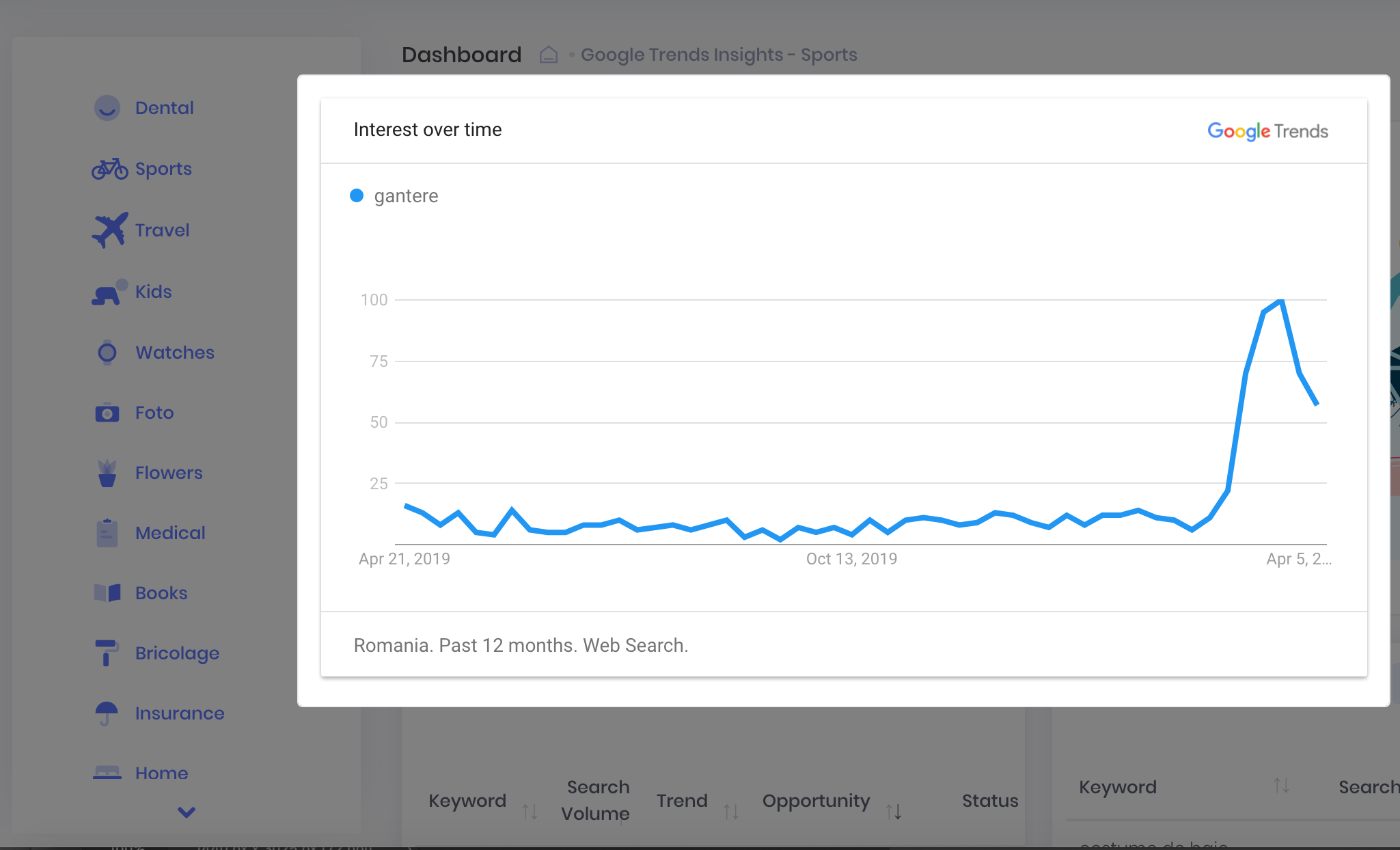
For example, in the category of stores that sell sports equipment, there is a growing interest in “dumbbells” – a product that consumers are looking for, along with other similar accessories, to be able to move within their own homes.
This information can be seen as an opportunity to create a new category on the site that meets this need and can be consistently promoted on all available channels.
Pivoting the content strategy.
As we said, the focus of the promotion strategy is now in push marketing (Facebook), for fast results. Why do we do this? Because the usual practice of developing holistic content – which answers all the questions that users might ask about a topic – brings results in rankings only in 1-3 months.
And time is not the best friend of business, in the context of the pandemic. Current data may no longer be relevant in 3 months, when the results will appear in the rankings. Opportunity windows are short and specific, so the new strategy must be proactive – businesses are turning to customers, not waiting for them to look for business.
Big Yes: Use real-time data to extend the types of buyer persona you are targeting. In Trends you can identify products that are massively demanded during this period, and in internal reports and in Analytics you can discover the extraordinary patterns of searches before and after the outbreak of the crisis.
We align existing content with current trends
Because the period we are going through requires measures adapted to the new consumption habits of your public, the content must also be properly aligned, in order to meet its needs. Thus, we use insights from the Google Search Console, which show us what content we can generate or improve.
We audit the existing content of your site and see if we can update it with information that users are currently looking for. After optimization, we promote it, in order to highlight the current information during this period and to respond as good as possible to the needs of your audience.
We nurture the relationship with old and loyal customers through content
The expectations of loyal customers are always higher than the brands they have been attached to over time. Therefore, transparent communication is perhaps the best way to reach them and ensure that they have chosen the right provider.
Managing such a crisis gives businesses the opportunity to become human and empathetic in the eyes of audiences. Sincere sharing of experience, as perceived by the brand, displayed honestly, transparently and consistently in official communications can contribute to the retention of this audience.
As far as we are concerned, our clients who decide to make major changes can rely on the support and expertise of Upswing for advice on the new face of their content.
Operational transparency
In sensitive situations, the need for consumers to know about the manufacturers or suppliers of products and services they choose and their solutions is more pronounced than ever. Operational transparency is an indicator of businesses’ ability to manage the challenges specific to this period. So yes: A dedicated FAQ page, a banner on the site’s homepage, a landing page about solutions, a permanent post visible on the Facebook page are just a few ways in which brands can increase consumer confidence and retention of them.
Example: https://www.mega-image.ro/masuri-preventie-covid19-magazine
Show your customers that you are able and willing to adapt for them. That you care about their safety and that you take steps to protect them. We are here with creative solutions and content to support them.
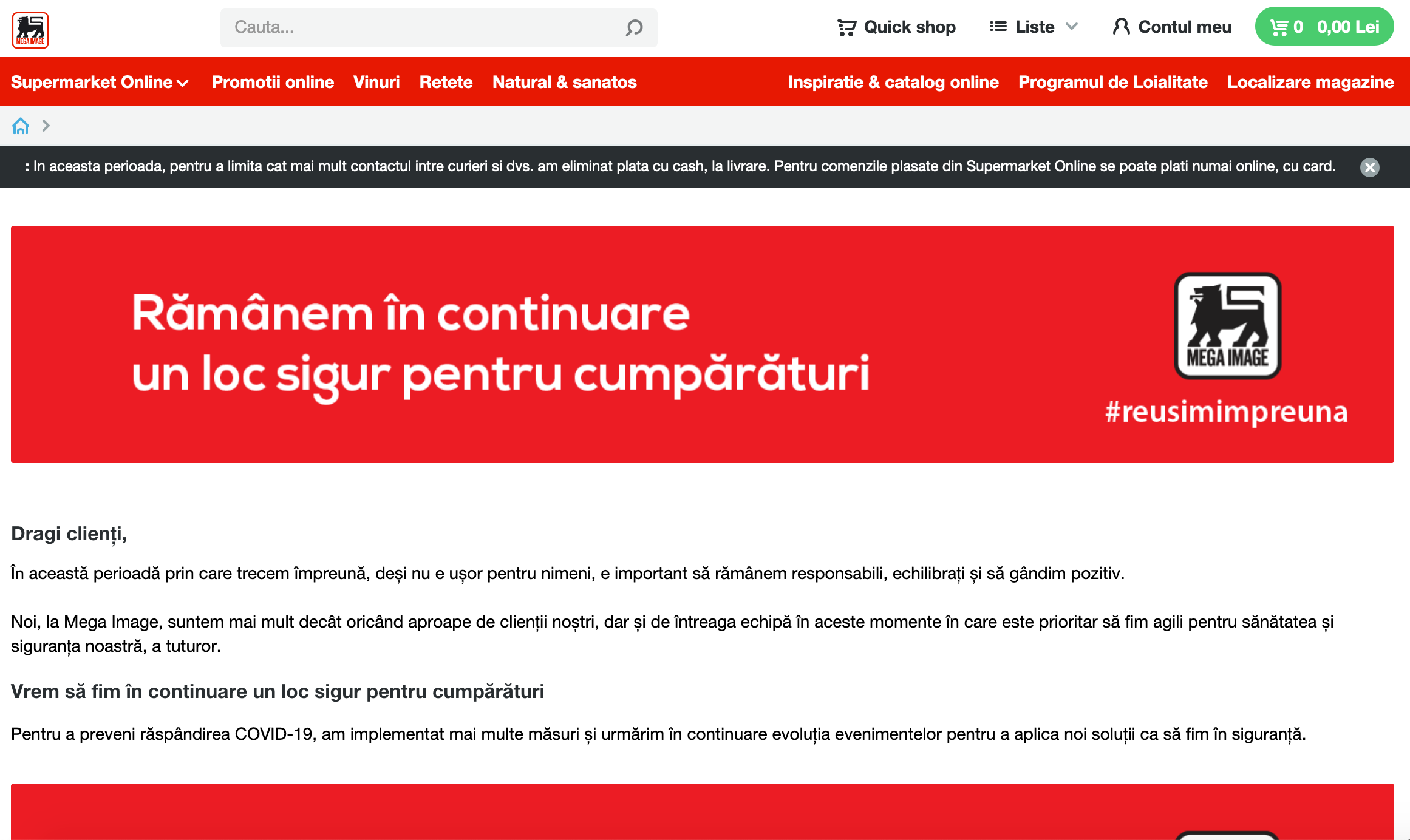
Brand expertise
Know-how is the most important resource you have. Take the example of strong medical businesses that have used their expertise to strengthen their position in the market.
For example, Regina Maria acted promptly and created a hub page around the topic of Coronavirus. So did Medicover, which has partnered with startup Atlas and built an online platform for medical advice. Both players saw the opportunity in topics that reached new heights in terms of search volumes and responded to consumers’ need for information on immunity or natural remedies through dedicated content.
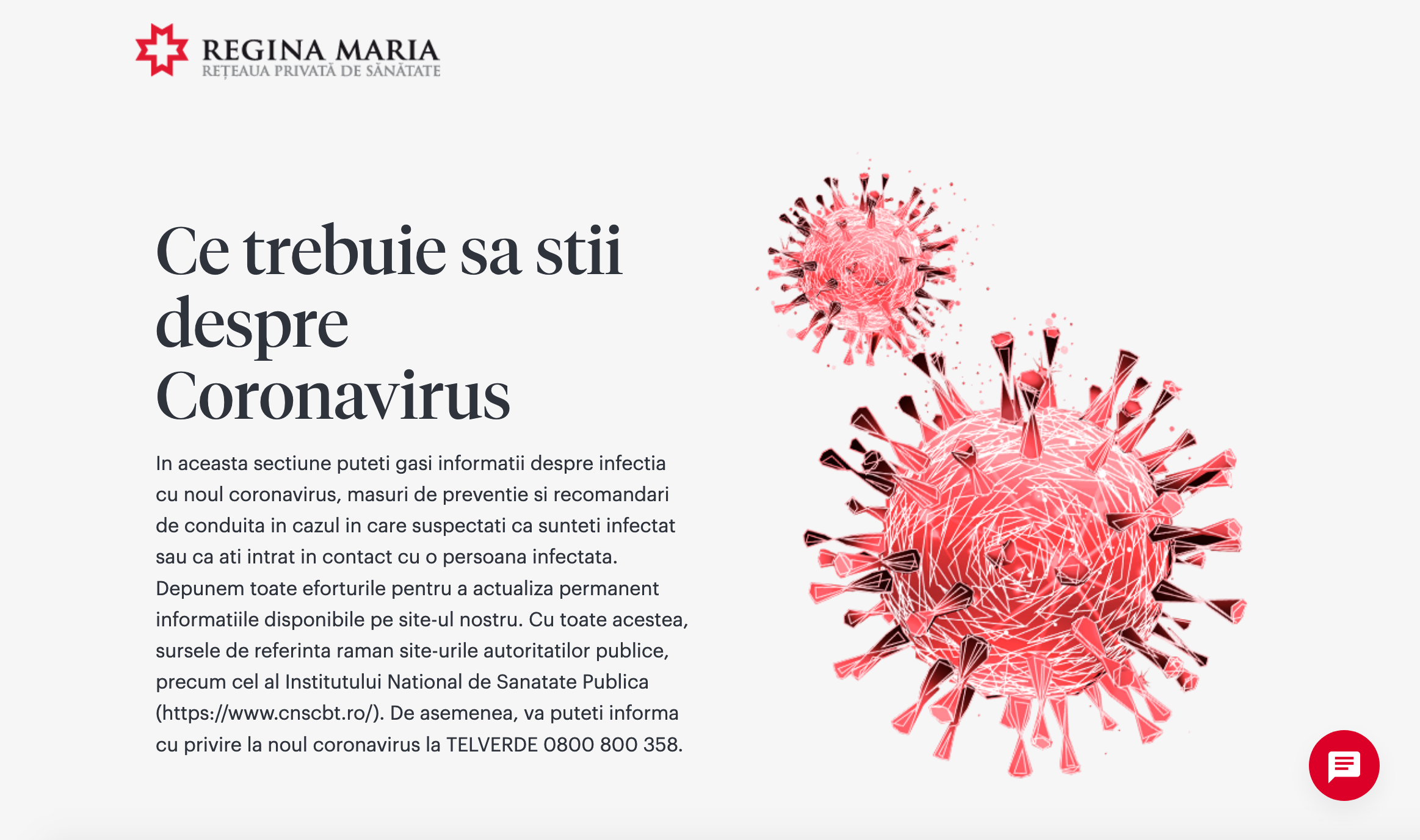
Pivoting the business model
Maintaining an openness to radically changing the business model can be a lifeline for those completely blocked niches today.
One such example is GOOD-FOOD.ro, a UNIVERSUM brand service, the largest event organizer in Romania, made in collaboration with Lagoo Snagov, the company’s event location.
“In the context of these days, we decided to redirect all our project management, logistics and feeding expertise to over 50,000 people a year, simultaneously solving two pressing problems: the need for a food solution to self-isolate an entire city and job security for our team. People for People is the new mission and we are happy and fulfilled as a team that we can be relevant and helpful. ”
